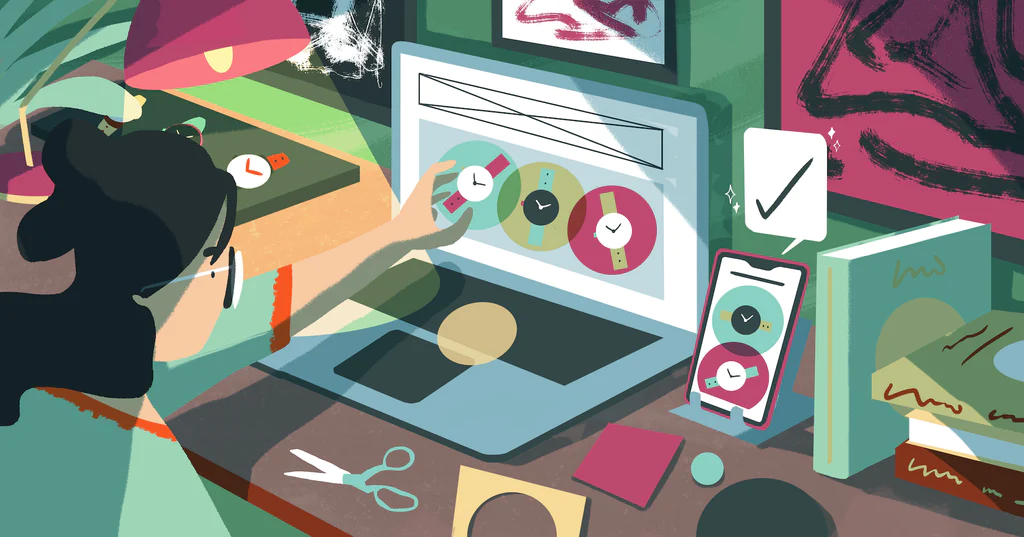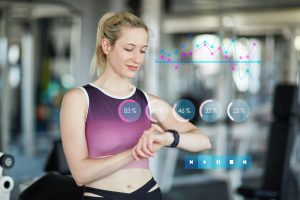Increasing sales is a common goal among company owners. The more conversions you get, the more sales you get. While your eCommerce Website Design may be bringing in online leads, constant income growth is essential for the long-term viability of your company.
Fortunately, it simply takes a few basic tweaks to your website’s design to enhance sales and increase conversions. Web design best practices for boosting conversion rates are easier than you would believe!
People’s reliance on internet platforms has grown since the COVID-19 outbreak broke out. In a recent GeekWire poll, 42% of respondents said they buy food online at least once a week.
So, let’s have a look at how to do an eCommerce Website Design to boost sales.
Keep Things Basic
Adding too many interactive elements or visuals to a website might be enticing, but doing so can alienate your clients and cause them to leave.
If you’re going for an eCommerce Website Development, keep things basic. The last thing that anybody needs is to go through five pages of content to find a menu that doesn’t exist. This results in a loss of consumers, which means a loss of revenue.
Think like the person who will be using your design. Your site’s navigation would irritate you, right? Is it possible to find all you need in only a few mouse clicks? Is it possible to read the names of the menus and buttons? These are all things to keep in mind while coming up with the layout of your shop.
Other basic design features include:
- Easy-to-read text
- The font is easy to read.
- Consistent color patterns
- Navigational aids that are easily recognizable.
- Product categories that are easy to navigate
- Be upfront and honest with your customers about what you’re selling and how they can buy it.
Make good use of imagery and color
On a minimalistic website, large, high-quality photographs are an excellent approach to highlight your items. Let the pictures speak for themselves. They pique the interest of clients and entice them to learn more.
Images boost conversion by as much as 40%, making them a must-have for every landing page. Customers want to know what they’re buying and want to view it from as many perspectives as possible before they purchase. Trust is built when your product is presented in a clean, professional manner.
Designing your eCommerce Store website with color psychology in mind might potentially influence shoppers. Conversions may be influenced by a variety of factors, including the color of your backdrop and the shade of a button.
Whether or not individuals are aware of it, various colors elicit specific feelings in them. The color blue has been shown to enhance trust in several cultures. The color red may imply a variety of different emotions, including vigor, passion, and even danger. Also, colors may be used to convey the personality of an organization.
Make sure your site is mobile-friendly and lightning-fast
We’re all aware that more people than ever before are accessing the internet through their cell phones. Even if you don’t possess a computer or laptop, you still have access to the internet via your phone.
Most mobile surfing is done by younger users, particularly those in the so-called “Gen Z” generation.
You’ll lose sales if your mobile site is slow to load or doesn’t load at all. Eventually, your visitors will give up and go on to another site.
Images should load correctly and your site should automatically resize to fit a smartphone’s screen. When using a smartphone or tablet, navigation links and buttons should be just as easy to use as they are on a laptop or desktop. You want to make sure your checkout page looks and functions the same as on your desktop site.
Additionally, the load time after your eCommerce Website Development should be as quick as possible. Before they’ve even seen a single product, visitors to your site will have an opinion about your business and your website as a whole if it has a slow load time. If your website takes more than four seconds to load, you’ve already lost 25% of your visitors.
Minimalist e-commerce website design is the best way to minimize poor loading times, so keep an eye on the things you use. It is best to avoid cramming your eCommerce website with too many images and content.
They’ll make it more difficult to load web pages. If you’re going to use high-quality photographs, ensure sure they’re not stored in the most memory-consuming formats. High-quality JPG photos work well on the web, but PNG files are much larger and take longer to load.
Streamline the checkout process
Things should go without saying, but just in case, make it as simple as possible for your customers when they reach the checkout page. A lot of work and effort goes into creating a website that converts visitors into paying clients. Get them over it.
Customers should be able to leave the store like guests. Limit the number of fields they have to fill out to the bare minimum. Make sure the data fields are clearly labeled. Make it possible for customers to see a sample of the item they’re about to purchase in their shopping cart, along with a brief description.
You should also inform customers of any additional costs associated with their purchase upfront rather than waiting until the very end of the line. Cart abandonment occurs if consumers notice a total significantly greater than they expected when they arrive at the “confirm purchase” stage.
Make clear what shipping alternatives are available and how much they’ll cost before you begin the transaction. You should clearly state your return and refund policies on your checkout page so that customers know what to anticipate if they need to return an item. When a policy is put in place, it makes the user feel more secure and increases the trustworthiness of your site.
In order for the consumer to get their goods, they must know what information they need, why they need it, and how you’re safeguarding it. Make it as simple as possible for them to do this.
Use reviews and testimonials
When looking into a new product, the first thing people do is check out user reviews. In the eyes of others, what did they think of the item? What were the opinions of their peers? In general, how did they feel about working with your company? You want people to see this type of information.
Ask clients to give honest evaluations on your e-commerce site by adding a rating system. The more good reviews you can rack up, the better. An overwhelming number of 4 and 5-star ratings help to build confidence in a product or service. People are far more inclined to pay for your goods or service if they have confidence in you.
Make your customer testimonials public on your website. Add them to the checkout page or blog. If you can, include a photo of your clients in their testimonials. When a real person posts a positive review, it helps to create trust with new consumers.
Adding a FAQ section to your e-commerce website is another approach to fostering customer confidence. Here, you may answer the most frequently asked questions from your consumers.
For example, put it in your top or bottom navigation bar or link back to it from other parts of your site. You may even want to put up a forum where other consumers who have dealt with the product before may answer queries.
Conclusion
Making a website is a simple process. It’s more difficult to provide a user-friendly experience on that site. eCommerce website design, on the other hand, is well worth the additional time and work.
See which of your favorite brands’ websites has a minimalistic look and feel for design ideas. Try to implement this style into your own eCommerce website design. Take advantage of an all-in-one online shop platform while you’re building or updating your online store.












